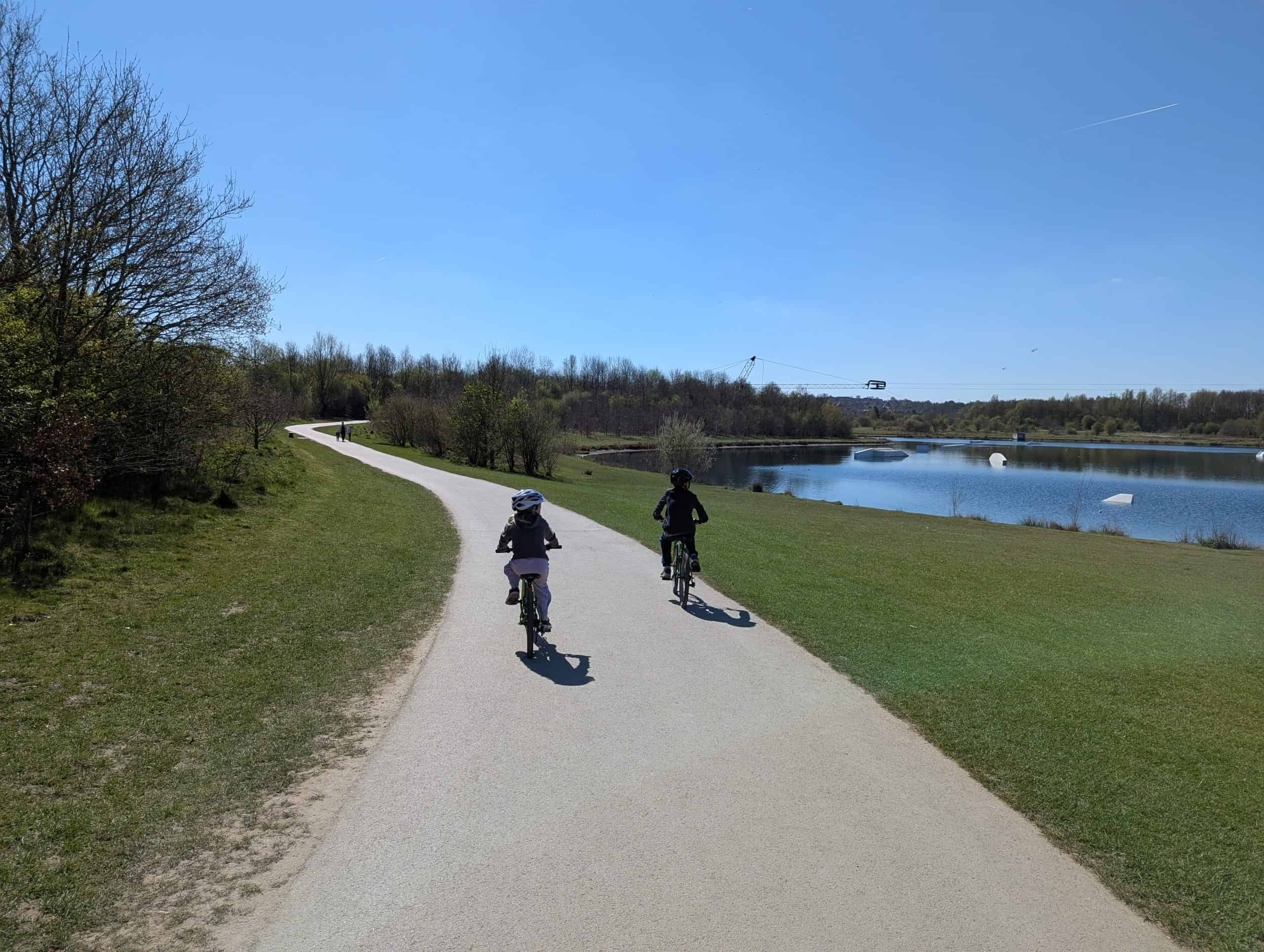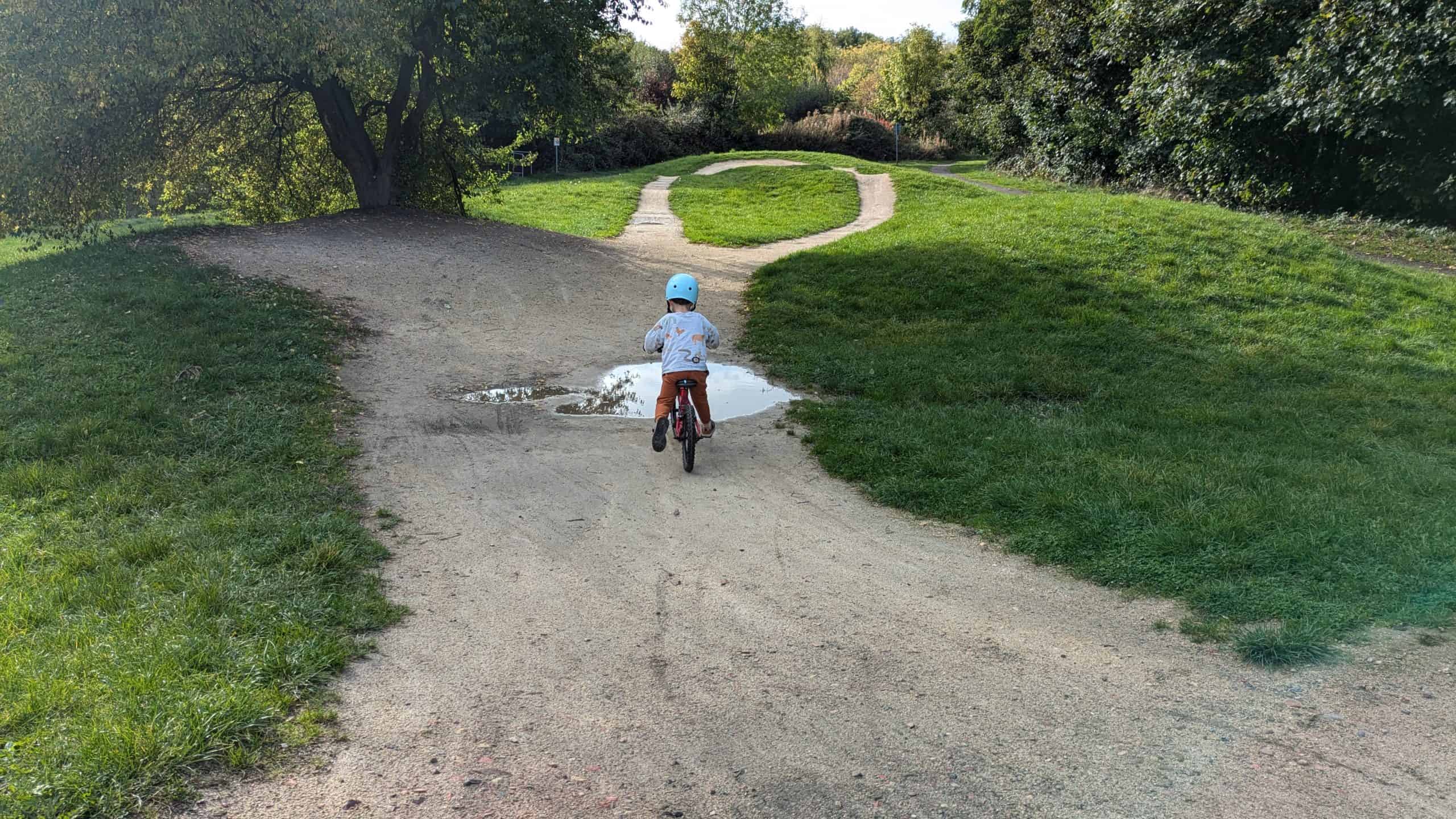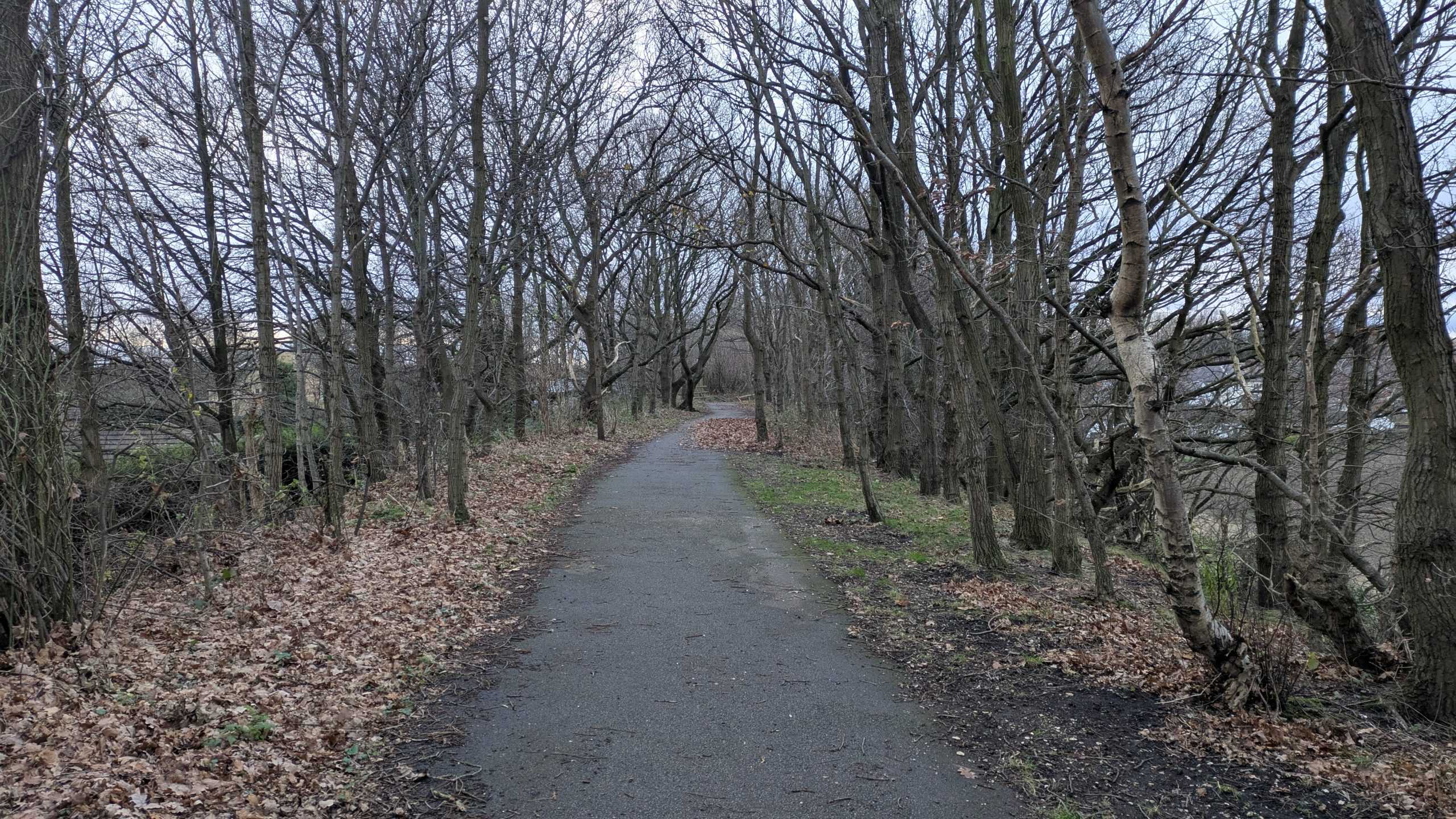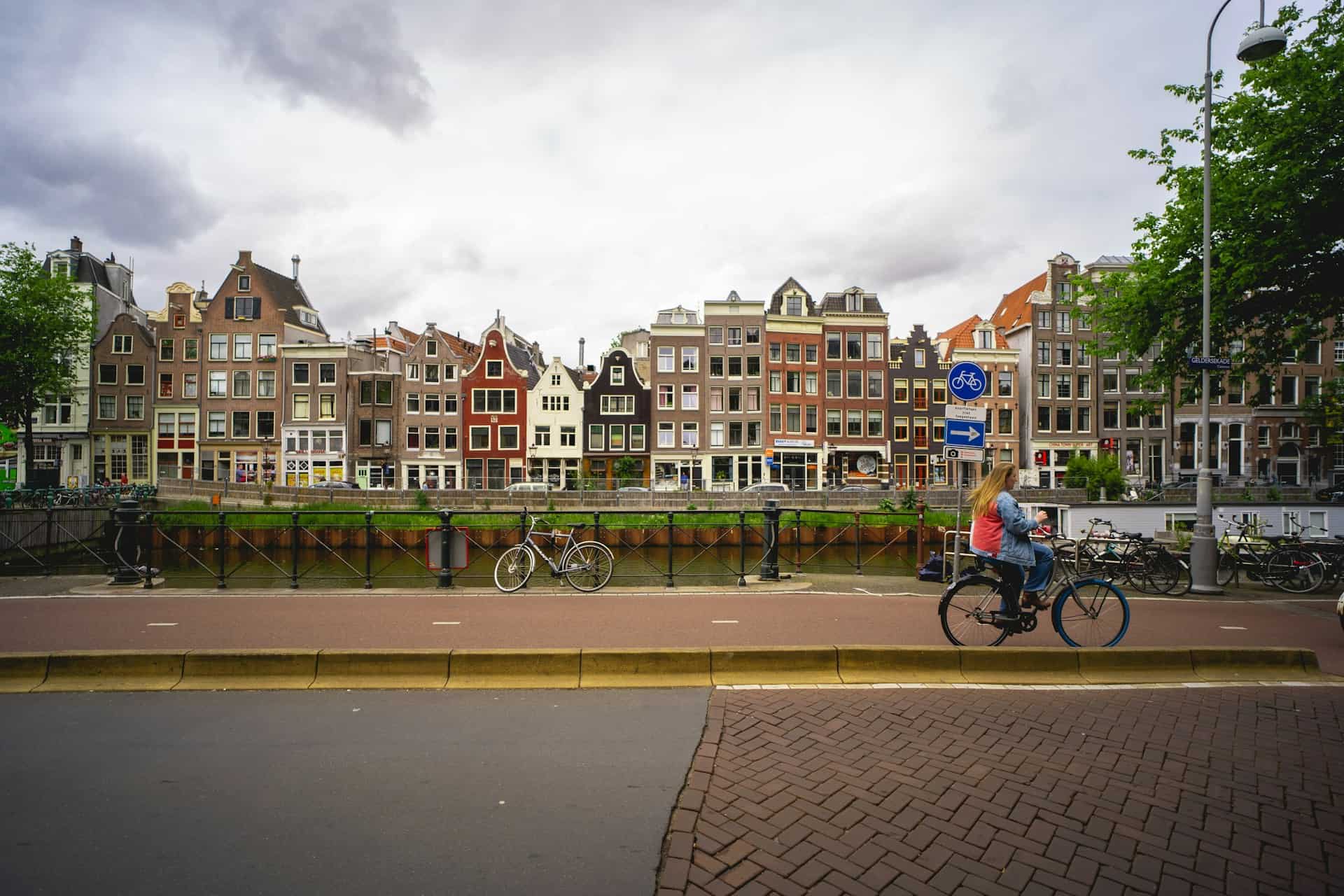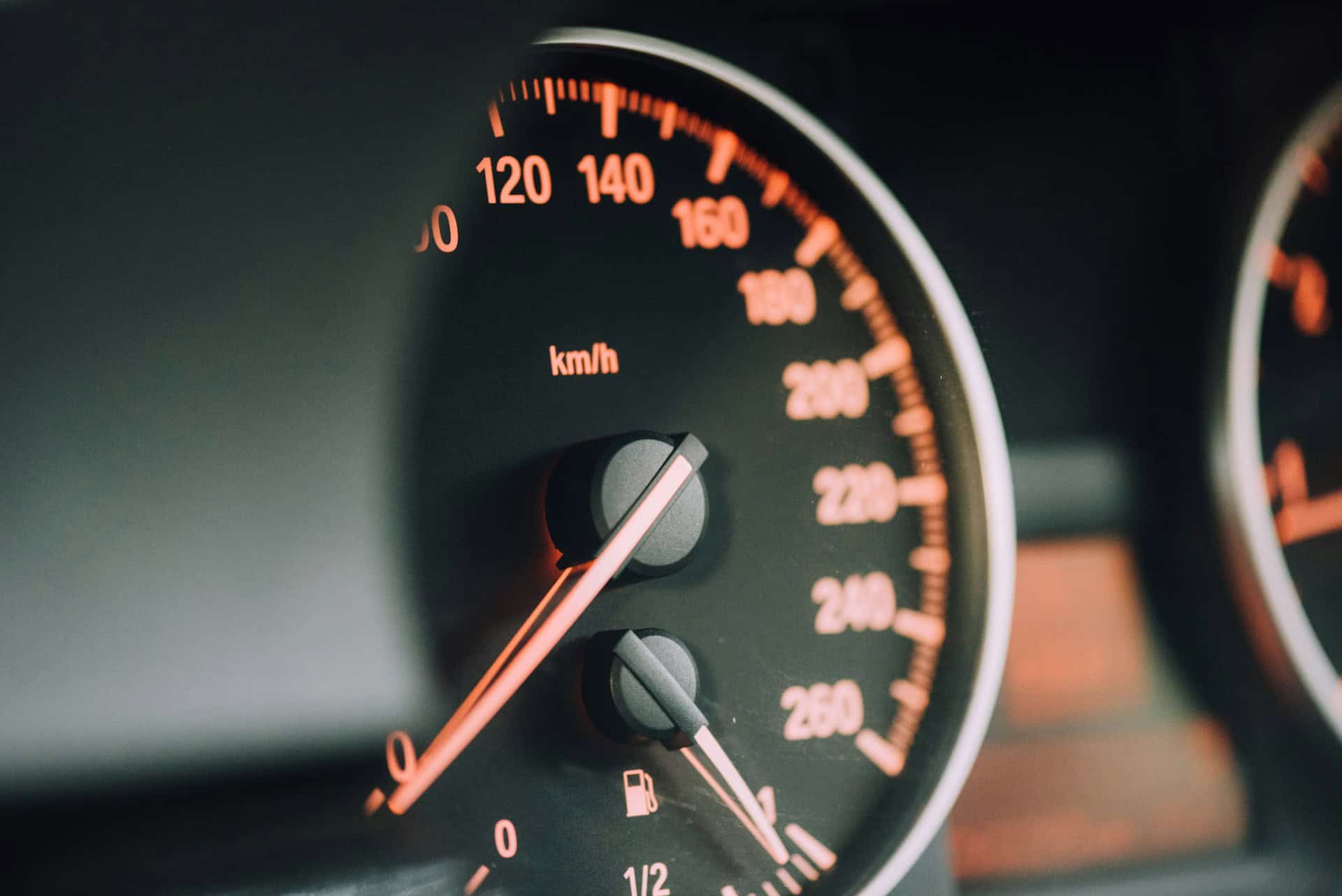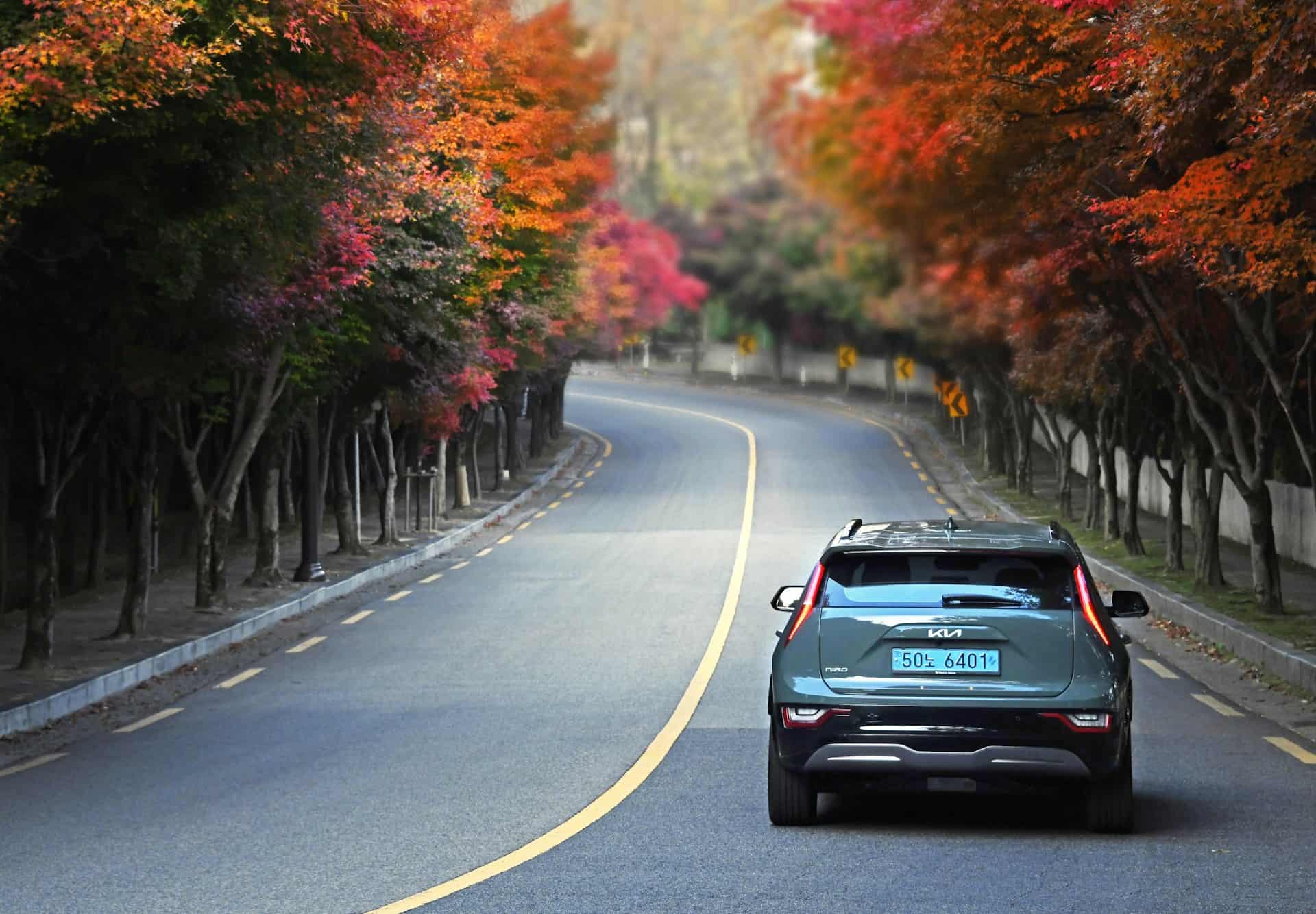Rother Valley Country Park is located near Sheffield, South Yorkshire, UK, just off the M1 at Junction 31, only a short drive away from the popular Gulliver’s Valley theme park. The park spans 750 acres, offering a mix of lakes, woodlands, and trails perfect for a family cycling day out.
Balance Bike Vs Stabilisers – Which is best?
Teaching your child to ride a bike is a significant milestone, and the method you choose can greatly influence their confidence and enjoyment. Everything from the place you choose to teach them how to ride their bike, right through to the bike choice. These all influence the speed of the outcome.
While stabilisers (training wheels) have been the traditional route, balance bikes are increasingly recognised, and evidence supports that they are a vastly superior alternative.
Center Parcs Review For Families
There’s a long-running joke about the cost of Center Parcs. A trip there can sometimes feel like you’re paying obscene prices for a trip a couple of hours away from home.
But here’s the truth we’ve discovered: when approached in the right way, Center Parcs can be one of the best-value short breaks for outdoorsy families—especially those with young cyclists in tow who happen to love swimming and parks.
Sherwood Pines Cycling Review For Families
Sherwood Pines is nestled in the heart of Sherwood Forest, near Mansfield, Nottinghamshire. The forest spans over 3000 acres, offering a vast, traffic-free space for outdoor adventures. It is an absolute haven for cycle trails across all abilities, as well as multiple playgrounds and outdoor activities like Go-Ape. There is also an excellent on-site campsite for those wanting to make it more than a day trip.
Commuting to Primary School: Walking vs Cycling vs Park & Stride vs Car
There are a whole host of different ways people commute to Primary school. Whether that’s our own preference for walking and cycling or driving, people have their own reasons for a specific journey type.
But the way you commute to school can have a huge impact on the overall health outcomes of you and the wider society. It’s not a straightforward topic to tackle yet there are ways it can be a balancing act between practicality, health and the environment.
Let’s explore four common ways families commute: walking, cycling, park and stride, and driving. We’ll provide insights, backed by research, to help you find and potentially make small changes which can have far-reaching benefits.
How to Get Into Cycling – How Do Beginners Start?
Cycling can look daunting as a beginner and the thought of getting started with something new can feel uncomfortable. You are not alone and this is completely human and this is how you should feel. But let me let you in on a secret. Cycling for leisure is actually incredibly easy, can be done in your own time at your own pace and is super rewarding!
If you’re thinking of giving cycling a go, but the idea of getting on a bike feels daunting, you’re not alone. At Family Cycling, our approach is simple, relaxed, and down-to-earth. We’re not chasing Strava segments or racking up miles (But if you do this it’s totally fine too!).
We’re about getting outdoors, building confidence, and using the humble bike as a tool for joy, connection, and adventure. Whether that’s taking your kids to school, heading down to the shops or just a recreational activity on a weekend. Bikes are arguably the most effective mode of transportation known to man.
So, how do you get started with cycling – especially as an adult? Here’s our step-by-step guide on how to get started with some simple hints and tips for those who feel apprehensive about taking the initial step.
Active Travel & Where you live..Does environment matter?
The Role of Infrastructure in Encouraging Family Cycling
We’ve all heard the phrase “you are what you eat,” but what about you are where you live?
The truth is, your environment can make a huge difference in how you live your daily life — particularly when it comes to how much you can rely on your own two feet (or wheels) to get around. Some areas despite the best intentions are just difficult to navigate. You may live off an incredibly busy road or car culture may be ingrained in the day-to-day life of those around you. This makes active travel far more difficult than somewhere which prioritises human-powered travel.
Whether it’s the school run, popping to the shops, commuting to work or just heading out for some fresh air, where you live can either support or sabotage your chances of living actively.
From a personal perspective when we chose to move to the area we are in over 10 years ago we didn’t consider active travel in our decision process. But two children, cycling holidays & thousands of miles of day-to-day life via bikes have changed that.
Despite our area being good for walking and cycling we are still in the minority. I’ve touched on before how it’s quicker, cheaper and more efficient but still very few (if any) parents of school children choose to ride a bike.
Some of this is mindset and unfortunately where we live many will drive 200 yards vs using their own two feet despite the overwhelming positives of doing so. But despite the noise around you, the environment is the main influence on your own decisions. We still bike and walk every single day as the environment (despite some challenges) enables us to do so.
Maybe you are about to start a family and want to raise them as resilient, strong kids who can travel well via bike or foot or perhaps you are heading into retirement and wanting a walkable environment to live in.
Here’s why the environment around us matters — and how it can shape our choices, routines and more.
Infrastructure Matters: The Impact of Cycling infrastructure on Family Cycling
The Role of Infrastructure in Encouraging Family Cycling
Cycling has long been heralded as an efficient, eco-friendly mode of transport. However, the presence (or absence) of dedicated cycling infrastructure plays a pivotal role in determining how many people—especially families—choose to cycle regularly.
Studies have shown that the introduction of bike lanes significantly increases cycling participation among all age groups, with families being among the greatest beneficiaries (The Guardian).
I’ve witnessed this myself at the school gate. I listened in to a conversation between two parents of Year 5 children who were about to do Bikeability training. They suggested they were happy for their children to do the playground training but wouldn’t consent to them doing the road training (which is usually within a safe/closed cul-de-sac or side streets).
I couldn’t help but think we’d made a wrong turn somewhere in a society where parents are too scared to allow their children to ride a bike. I’m obviously biased but bikes are the facilitator of freedom. They are enablers; particularly for those growing up as a means of transportation. Not only that but from a health and environmental perspective. What world have we created where we are happy for our children to lead sedentary lifestyles over active ones?
I must confess it’s not easy to cycle within a suburban environment. Pavement parking, speeding, close passes, distracted and rushed drivers. It can be a real challenge; especially with two children in tow.
I believe infrastructure matters and 30+ years of poor infrastructure choices have contributed to a decline in health (mentally and physically), time, happiness and autonomy. But how do we change 30 years of poor planning decisions and the subsequent impact on our society? Let’s look at how the impact of infrastructure can bring positive change, the net benefits of doing so and the next steps.
The True Cost of a PCP vs a Second-Hand Used Car
For many families in the UK, owning a car is a necessity. Our public transport is underdeveloped for the modern world, many live rurally with no access to other means of transport. Having a car is a requirement for many.
However, cars are a method of transportation and should be viewed as such. The rise in car finance (namely PCPs) has seen this change with the car fast becoming a status symbol for many. However, with the meteoric rise in car finance, expensive cars have become widespread.
But did you know this method of financing that car can have a profound impact on financial stability and overall quality of life?
Since their introduction in 2008 PCPs have seen a huge growth in popularity. The consumer car finance market is the largest of the UK consumer credit markets accounting for 36% of the total value of outstanding consumer credit contracts at the end of September 2024
One of the most common financing methods is a Personal Contract Purchase (PCP), where consumers pay a deposit and monthly payments for a brand-new vehicle, often upgrading to another new model every three years.
But what is the opportunity cost of this? What are you potentially leaving on the table? Have you ever zoomed out and wondered what would be if you broke the chain and kept a car longer? Let’s explore the true cost of your PCP vs a Second-Hand used car.
EV vs eBike – Why Are People Choosing EVs Over eBikes?
As someone who enjoys using a bike for short trips, I’ve always been baffled by the fact that eBikes haven’t been pushed harder by governments—or should I say the UK government? Those who enjoy cycling will know of the benefits of cycling in the Netherlands vs. the UK but the age-old debate of a flat country will always rear its head. But what about eBikes and why aren’t we using them?
With modern eBikes boasting an 80+ mile range, minimal charging costs, and easy storage, they seem like an obvious choice for short commutes. Yet, the popularity of electric vehicles (EVs) has skyrocketed as a genuine ‘clean’ option (although subjective) vs an ICE car.
So, why is this? Is it cultural? Are government incentives swaying the market? Or is it a combination of factors?
Our focus here at Family Cycling is to make your life better so I wanted to explore why an eBike should be a genuine option for you from a health and financial perspective.
Let’s break it down and explore whether an eBike could be a better alternative to purchasing a brand-new EV.

